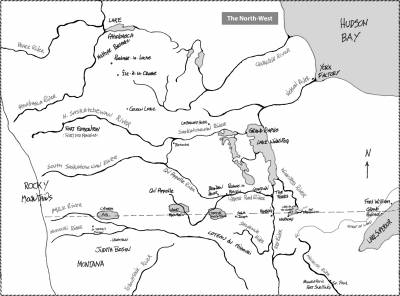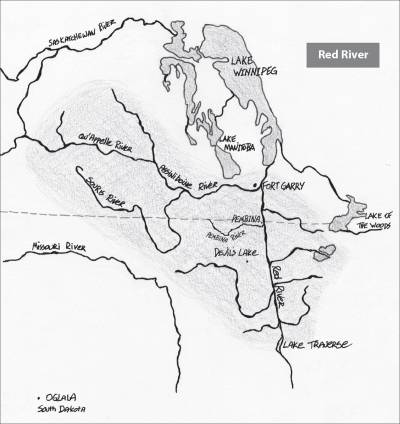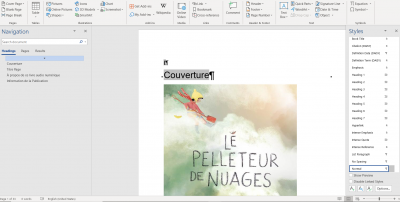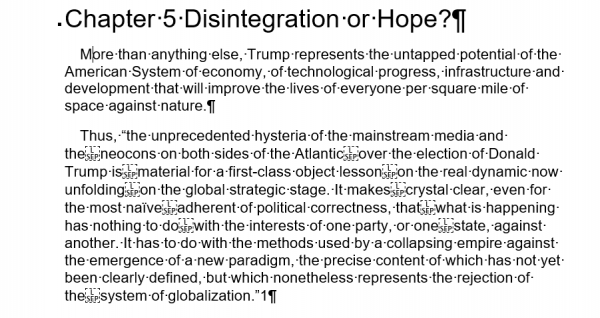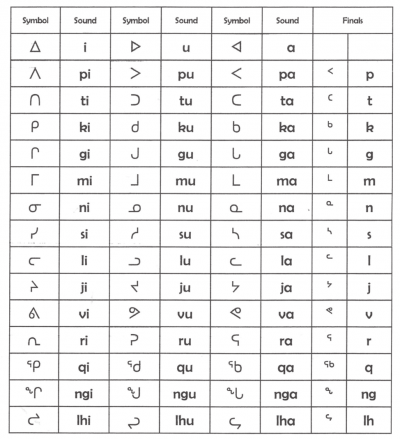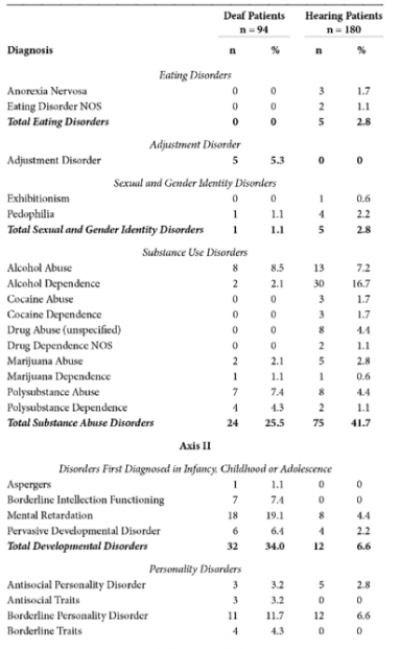This is an old revision of the document!
Production Q & A
Post here your questions (at the top of the page) and we shall invent answers! :)
In case you're wondering where your questions went: they got moved to the pages where the information should be… they're all listed as Q&As on the (hopefully) relevant pages and we'll work on incorporating the bits into the documentation directly.
Thank you for all your outstanding questions so far, and please keep posting them here.
Q: Hello! I have a question about an image in the book I'm working on, "Seeking Allah, Finding Jesus". In the Prologue, every time the author writes "Muhammad", he inserts a small image. The footnote explains that the image is a symbol representing an Arabic phrase: "peace and blessings of Allah be upon him". I'm thinking of handling this by deleting the image of the symbol and replacing it with the phrase in brackets. What do you think? If I do that, should I insert a prod note explaining what I did?
A: In this case you would treat it as a regular image and insert the Alt-Text: symbol representing an Arabic phrase: "peace and blessings of Allah be upon him". You would then put a Producers Note at the beginning of the book to explain why you did this. For more info see here.
Q: Another question about "What the Bible is All About". This is about the glossary. It gives a pronunciation guide for many of the terms (eg. "eunuch (YOO-nuhk)" ) which includes uppercase letters to show which syllable receives the emphasis. Is it okay to leave all the uppercase letters alone and add a Prod Note explaining that screen readers may not pronounce the pronunciation guide portions correctly?
A: Yes, we can just leave as is written, since that’s the way to indicate pronunciation. An optional producer’s note at the beginning of the section is a good idea! ![]()
Q: In the book "What the Bible is All About", there is a sort of mnemonic that I'm unsure how to format. It's in chapter 45 on page 508 when I view it in Adobe Digital Editions. It displays as follows:
Forsaking
All
I
Take
Him
So, it looks like a list but isn't really a list. And it has the first letter of each word bolded to show that they spell "Faith". For now, I have left it with each word on a separate line but not as a list and I applied Strong style to the first letter of each word to mimic how it appears in the book. Do you think there's a better way to handle it?
A: The way you handled this is correct. You don't have to format this as a list, and keep the first letter in strong style. Good work!
Q: Unsure if the tables were formatted correctly in Appendix A at the end of the book 101 ways to meeting angels by Karen Paolino.
From the Tables section of the wiki: "A caption or description should always be included to give context to a table"
I am interpreting the 'or' in 'caption or description' to mean to include one of the two (either caption or description). But given our past conversation on inclusion of alt text, perhaps i should be including both? Caption and Description? But when I followed the wiki's instructions to add a description, it was greyed out and I was unable to edit it, so only captions are present for the tables.
A: I will fix the wording in the wiki, but every table should have Alt-Text. When it comes to not being able to access the Alt-Text in the table priorities, it looks like this is an issue with they way the document was saved. Just resave and replace the document using the 'Save As' option and double check to ensure it is saving as a .docx file. It will prompt you to replace the file, just accept and replace the file. It should now work!
I creates a short video to illustrate what I mean: https://screencast-o-matic.com/watch/cYn6q2wTtP
Word is a finicky beast!
Q: I'm just about finished this book but am having difficulty with one section: the Photo Credits at the end. They provide credit for some of the photos but I'm having a hard time telling which credit goes with which photos. They appear to be referring to roman numeral page numbers within the photo inserts but when I view the epub file in Calibre or in Adobe Digital Editions, I don't see the page numbers in the photo section so I have no idea which photos are on which page. So I can't tell which credit goes with which photo. I'm also not sure how to format this section. It seems a bit like an index where it's pointing the reader to specific pages so I was going to treat it like an index and format it as a list with a Prod Note about the page numbers being included but not valid. And then I was going to copy each photo credit and add it to the caption for the photo it belongs to (but then ran into the problem of not knowing which credit belongs to which photo).
A: First off–wow this is terribly formatted. Now to your questions:
I opened the book up in Calibre, and looked at the photo credit section. The text at the top of the section states that all photos are copyright Stevie Cameron expect where otherwise noted. Then the hyperlinked list goes directly to the images that are NOT credited to Stevie Cameron, and the clue to which image that is in in the hyperlink text. For instance, the first on is the top image on the page ( ii (top) Toronto Star/GetStock.) I am still not sure what the roman numerals are, but they are confusing. Following that logic you can identify each image as it hyperlinks to the respective pages. Since we don't use page numbers the best way to deal with this section is just take each copyright statement and add it into the end of the captions for each image (or as a caption itself if the image has no caption.) Then erase the hyperlinked list, but retain the section with the opening sentences and add an inline producers note explaining what you changed (i.e. in the original book the additional copyright information was presented as a hyperlinked list. Due to the conversion process we have reformatted that information to be included in the captions of the images respectively…or something along those lines.) Let me know if you have more questions. I am also gonna copy this to the Q&A section of the wiki.
As for locating page numbers in Calibre, there is a text bar in the top left corner of the E-Book viewer that shows the page numbers (e.g. 486.0/1435 is page 486 out of 1435)
Q: I'm wondering if there is any way for me to check whether the images I've inserted into a book are the correct format (eg. JPG or PNG). They all look the same to me and I can't find any way to identify the file type within the Word doc. I follow the procedure for inserting images outlined in the wiki so it usually doesn't matter but in very long books, I sometimes miss a few but I can't double check if I missed any because I can't tell what file format they are.
A: Unfortunately, there is no easy way to find the image types within the word document. You can save your edited word document as a webpage, which will create a folder with all the extracted images. This file will show you all the image format types within your document, but it wont necessarily show you where they are. You would have to go through the images in the folder and try to match the images to the document, which can be time consuming.
Another tip is to look at your workflow and try to see where you are making an error in your workflow to try and avoid it from happening again.
There are two issues that can be causing this to occur, and they both have slightly different solutions: one has to do with workflow of extracting images, and one has to do with the workflow of replacing images.
Extracting Images: The only method of extracting images that could cause an incorrect file format to occur is with screenshots. This is easily fixed by just double checking with each screenshot you take that you are saving the file in the correct format (gif, jpeg, png, or svg.) Again, this is only if you are using screenshots, if you are not using screenshots then you should address your workflow.
Replacing Images: You mentioned this only happens with larger books, which is understandable since there are more images and more room for errors. I do not know what your workflow is for replacing images in the text, but it is a good idea to evaluate your current workflow and see if there is any way you can improve it to help avoid future errors. If you want more tips on how to do this just ask.
I would not stress over this; if it is only happening with large books, and after evaluating your workflow you find that you are still having some images slip through that is okay. The best way to identify exactly where they are only occurs after the Production Coordinator converts the book at tests the new file.
Q: I'm trying to keep in mind the aim for clarity and focus on relevant information, but I'm struggling with this. One of the first maps in this book is a map of the North-West area of Canada with a lot of lakes, rivers, and important villages labeled. Throughout the book, there are a few other maps which "zoom in" on specific areas which have already been described in this larger map, perhaps with some added details. Do I need to re-describe the area exactly? Or how should I proceed with these cases? For example, I've included the large map of The North-West and a map of Red River. Lots of the info in the Red River map are already present/described in the North-West map.
A: Maps are challenging for anyone. If you haven't already checked it out, you should go look at the Alt-text samples we have on the wiki (there are two map examples that could help.) To answer your questions: I would not repeat what has already been described. You can start the zoomed in descriptions with something along the lines of 'This map is a closer image of the Red River area…' you could include some sweeping description like "it includes the areas between these rivers" or "it is bordered by these rivers" etc. Then you can add more detail into. Remember that starting big and going small can help in these cases. I also recommend opening a new document to work on the descriptions, so you can easily edit and rewrite as you go. It is good to remember what the purpose of the map is, and to base your description on that purpose. In this case it looks like the map is meant to show the layout of the land, so you should describe it in a way the listener can get a sense of the layout. Where are the rivers and important points? Where to do they lead to. You can start big (this is a map of this area that features rivers and this lake) then start at one point and work your way through the map like you are traveling through it. Reading it aloud will also help.
Q: In Murach's Python Programming, there are many pages that are captioned and referred to elsewhere as "Figures". (For example, page 25 in the PDF file is labeled as "Figure 1-1" and page 27 is "Figure 1-2". I looked ahead a few chapters and it actually looks like almost every other page is a "Figure"). These Figures contain a mixture of tables, images and text. I'm wondering what the best way is to handle these. Would it make sense to treat them as textboxes so they are marked off from the regular text and move the figure caption to the top of the page and make it a heading within the textbox? My concern is that if I treat them as an image with a caption - which seems to be the current format - the user won't be able to navigate to them when they're referenced in the main text. What's your advice?
A: You do not have to treat them as a textbox, you can just move the header up to the beginning and assign it the correct hierarchy (i.e. make it lower that the headers above it.) When it comes to the images themselves, they seem to have been converted in different ways, and should be treated case-by-case. For example, in Figure 1-1 converted all as text. The four general purposes should be a list (you can treat the header of this list as normal text. My reasoning here is that not all the headings in these figures work as headings for accessibility–for instance the table would become a caption. Since this is the case we should try and be consistent and avoid confusion by treating these particular headings as either captions or normal text depending on the context. This can help make the document more uniform in conversion. Does that make sense?) For the next part, which is the table, the header would be the caption of the table, and then for the next section the header can be treated as normal text. In Figure 1-2, you can cut the image up into three images with the headers as captions. Remember, if you do have an image that is text (in these cases HTML examples) you can transcribe them into inline producers notes. This is a complicated book, so if you have any other questions do not hesitate to ask.
Q: What do I do if there aren't any page numbers in a kid's book? The wiki says to make sure my page numbers that I'm using for page headings match up with the book. I'm working on Birdsong and I'm using Calibre to view it and don't see any page numbers.
A: I opened this up in my Kindle reader to check if this was an issue with Calibre (.azw3 is a kindle file) and it still did not show numbers. In this case just assign the headings in order of the pages they appear (i.e. the first page of the story is Page One and so on.)
Q: I'm working on the play "1 Hour Photo." It contains a few Japanese characters but in the conversion, the characters were changed to Roman alphabet letters instead. The English translation is given for the symbols so I'm wondering if I should just erase the Roman alphabet letters. Or would it be better to insert the proper ideogram back in? If so, how do I do that?
[Here is an example: Tetsuro raises both hands to illustrate the ideogram for "mountain," Ill.]
Another option I thought of was to copy the image of the ideogram from the PDF file and paste it into the Word file. Then, add alt-text to it. What do you think?
A: You should insert the proper ideogram back in. You can do this using unicode. Here are the instructions on how to set that up–but remember, some languages are too complex for this technique. If you feel confident you can insert the correct ideogram, the do so. Remember, we never have text as images, even if it is in another alphabet.
Q: That's the thing, I don't know how to find the correct Japanese ideogram in Unicode. I don't even know which Japanese alphabet to search in - apparently there are several. I don't feel at all confident that I can identify the correct symbol. I know how to insert symbols with Unicode - the missing part is how to identify the specific code for the correct Japanese symbol. I think it would be one of the CJK Unified Ideographs but I don't know which one and I can't just search "mountain" to find the correct one. The instructions you point to on the wiki don't explain that part. To me, this falls under "Some languages cannot be transcribed due to the complexity of that language" which is why I was wondering if I should find a work-around to still include the symbols for people who do understand Japanese. Or, just leaving the symbols out since the English translation as well as the English pronunciation of the Japanese word are both included.
A: In this case, since it is an issue of conversion and you are not confident in finding to correct ideogram, then simply put a producer's not at the beginning of the book explaining that the original Japanese ideograms did not convert to this version of the text, but the translation and punctuation are present–or something better written than that to explain the issue.
Q: Another poetry question: In the book Treaty #, on page 1, 33, and 63, there are a bunch of backwards words. They're English but they're spelled backwards. They also seem to be slightly out of order. I'm just wondering if you have any suggestions about how to handle this? Do you think I should just leave it as is? The backwards English words are so hard to read (which I think is the author's point) but people with print disabilities may not be able to access them at all this way. I'm wondering about inserting a second version with the words spelled normally but still out of order, with a producer's note explaining that in the original version, they are spelled backwards? Just for accessibility reasons.
A: In this case, leave it as is since it is the intent of the author to have it difficult or impossible to read. Insert a inline producer's not before the title of the poem explaining that the poem includes words that are backwards and out of order to intentionally create confusion for the reader.
Q: In the book of poetry I'm working on (St. Boniface Elegies), there are quite a few words marked with italics. On the page on poetry in the wiki, it says, "Sometimes certain styles can be retained within the poem, such as italics. If you are working with a poem with such formatting please contact us to advise how edit." So, could you let me know how I should handle the italics in this book?
A: You can retain the italics in the lines of poetry, but remove the italics from the titles, blockquotes, Acknowledgements, and About the Author. The italics in the poems themselves are there for emphasis, while all the other times it is just a visual stylistic choice that does not add meaning to the text and therefore not needed for conversion.
Q: Also relating to the book of poems (St. Boniface Elegies), I've come across a poem that is divided into sections and each section has a title. So essentially they are sub-titles and normally I would give them the next level of headings. But since this is poetry, I'm not sure how to handle them. Should I tag the sub-titles with the Poem - Title style? With the next level heading style? Or not tag them at all? The poem I'm referring to is called "downtown campus" in Part 1 of the book.
A: Keep them as Poem (DAISY), but retain the italics. You can also put an inline producers note to explain what you have done. The wiki has some examples of this in the poetry section. Poems are often a bit tricky, since they are both creative and we are limited by what we can do within the DAISY consortium standards for access. Hope that helps!
Q: In the book A Girl Named Lovely, there is the following sentence: "Of that, C$128 million was matched by the government, adding up to C$282 million." I know text-to-speech software can handle the $ just fine but when I run it through Word's built in TTS, it doesn't interpret it as "Canadian Dollars" as intended. Is it okay if I change the sentence to "Of that, 128 million Canadian Dollars was matched…"?
A: In this case leave it as it is, most advanced screen readers will be able to read it.
Q: I'm working on the book The Gospel in Every Book of the Old Testament. It has a mistake in its end notes. There is one note listed at the back of the book that has no corresponding superscript number in the text. If I leave the note out of the text to reflect the book, the reader will have no way to see the citation since we don't retain the book's version of the list of endnotes. I'm fairly certain I know where the superscript number is supposed to go - is it okay to add it in? Or should I let the mistake stand since that's how the published book is?
A: In this case, you should enter the superscript number in the section if you are confident you know where it goes. This is clearly a typo, and the type of typo that would make accessibility tricky. Good eye.
Q: There is also a mistake in the numbering of the chapters: no chapter 25 and two chapter 28s. Should I fix that to help with navigation or leave it as is?
A: You are correct, in this case we would want to fix this since it would hinder navigation.
Q: The book I'm doing has nested sidebars. How do I handle these? Can I just start a new sidebar inside another one? I'm referring to My Parents Have Cancer. Here's an example (from section 13.8):
A: In the case of this book only put the sections within strong lines, or the 'Notes' and 'Tips', in sidebars. Everything else should be addd into a hierarchical heading structure. It is easier for people with screen readers to navigate through heading structures, and the nested sidebars would break accessibility standards. This would mean that all the story examples that are within a dotted line would have a heading. Remember to follow the rules of hierarchy with your headings (Always go up or down one level only, never more.) Also note, the dotted lines in this book work more as decorative breaks than as text boxes (notice how there are empty double lines through out the book.) You can replace the dotted lines with the three asterisks to retain some of the original design of the book. Let me know if you need more clarification or have other questions about this book.
Q: I'm working on Pelleteur de Nuages and there is some kind of weird code in the word doc that's making it very difficult to work with. Here's a screenshot to help explain:
There's a curly bracket at the beginning that if I try to delete it, deletes the entire text. It's somehow connected to everything that follows. If I click it, the entire text is highlighted. I think it's the source of my problems but I don't know how to get rid of it.
The whole file is very slow and tends to crash. I also can't figure out how to get the text to be black on white instead of highlighted grey. I've gone ahead and started editing it, but it's very slow going and I thought you might know how to get rid of the hidden code that's slowing things down?
A: All the links are still active within the document. I downloaded the document to see if I could find the issue. I followed the steps of starting a document (Delete all styles, upload NNELS template.) The next steps should always be Select All and Clear all Formatting followed by Select All and Remove All Links. There is a section on the wiki that shows you how to do this in Windows and Mac: Links. Start from the original converted file, and go through all the above steps. When I did this on my computer everything worked out, and the file was not slow at all. We all know Word can be wonky, so it is always good to start from the beginning in these cases. After you do this, and you still have an issue, let me know.
Q: Just checking whether the inline citation procedure for internal links applies to an index? The book I'm working on (City of Omens) has an extensive index with links instead of page numbers. For example, the entry for a person named Alaniz, Victor has 8 internal links after his name that each just say "here" instead of page numbers. Should I go through each link and replace it with the name of the chapter where the link takes me to? (this book is not subdivided any further than chapters, there are no section headings so I'm just not sure how useful this would be to the reader since the chapters are fairly long).
A: Since DAISY does not support such links, we will have to treat them like other inline citations and replace them with the Chapter Headings. Another idea is to do See 'Insert Phrase' in Chapter #, I am not sure if this would work for each, but it may be a workaround for the limitations of the reader.
Q: I'm trying to add alt-text to the tables in His Needs, Her Needs but the area where I type the alt-text is greyed out:
I'm using the newest version of Word and I tried closing it and reopening it but it's still greyed out. Any suggestions?
A: Try saving the document as .docx and it should work. If you have done this and still have problems please let me know.
Q: One more question from His Needs, Her Needs. At the very end of the book, there are 5 full-page images that are advertisements for other books by the author, for his website, and for his publisher. They aren't decorative but I'm not sure how important it is to keep them (and therefore add alt-text to describe their content). Would you recommend deleting them or keeping them?
A: You can delete these images.
Q: In Appendix B of His Needs, Her Needs, there is a 10 page questionnaire but each page is an image file that contains text, not actually text. Am I right that I should transcribe the text from each image and then delete the image files?
A: In this instance the context is critical to understanding the book, and should be transcribed, the images should be removed, and a Producer's Note should be places at the beginning of the book explaining this has been done. I took a peek at some other parts of the book, and there seems to be other surveys as well. When it comes to these sorts of images it depends again on context, and is a judgement call. If the details of the survey is critical to the understanding of the book, then we do the transcription and Prod Not as mentioned above; if the survey is not critical to the understanding the book then simple Alt-Text is enough (remember to keep the Alt-text brief and concise, and you can refer to our Alt text examples for some inspiration if you need it.) There is a Question and Answer a bit further down on this page that addresses this as well for your reference. You can also see the section on Image and Surveys for more information.
Q: Another caption question! The book I'm working on has a painting at the beginning of each story that goes with the theme of the story. I have extracted the images of the paintings from the epub file but they each have the painting's title and year of creation incorporated into the image as a caption. I know that a caption in the image isn't good enough because it won't be read by TTS software and will be hard to see for people with limited vision. But is it okay that there will be a second caption when I add mine or do I need to figure out how to crop the image to get rid of the built-in caption?
A: Great question! There are two options for this; (1) you could simply transcribe the text from the image at the end of the caption that already exits, or (2) you could transcribe the text from the image into the Alt-text.
Q: What do I do when a single caption refers to and describes two different images? Is it okay to give both images the same caption? ie. copy and paste the caption and apply it once to the first image and then again to the second image?
A: You only have to apply the caption to one of the photos. With the Alt-text and the placing of the images the reader will be able to figure out what is going on.
Q: This book has a couple endnotes throughout, but also has this kind of thing:

Which is then referenced at the end of Chapter 11 with relevant bible quotes and some author commentary:
How should I proceed?
A: The first set of quotes are actually titles of Subsections. If you click on them they take you to the TOC of the EPUB, and vice versa. The Number and Quotes are listed as Subsection in the TOC in the EPUB. So you will need to style they as Sub Headings (e.g. 1:“God is not a whole lot different from me.” [Heading 3 Style-which seems to be the next heading down if I am going by the EPUBS TOC.])
As for the Second Set, this is a bit trickier since they are not in the EPUB TOC, they are not Hyperlinked, but they have the same styling as the other numbered quotes. Since the publisher has used the same font style as the other numbered quotes, you should stick to consistency and style them also as subheadings.
Q: This book has an "Author's note" section listed 3 times throughout which asks readers to rate and review the book on Amazon.com or "wherever you purchased it from." The note is the same in all instances. Should I leave all 3 instances of this text in the book? Or remove some of them?
A: You can simply remove these sections.
Q: The book I'm working on has the following section near the beginning:
Ebook Instructions In this ebook edition, please use your device's note-taking function to record your thoughts wherever you see the bracketed instructions [Your notes] or [Your response]. Use your device's highlighting function to record your response whenever you are asked to checkmark, circle, underline, or otherwise indicate your answer(s).
I'm unsure how to handle this since the end user won't be able to record their notes or responses in our version. Should I leave it in or delete it?
A: You can remove this section.
Q: The book I'm working on isn't EPUB or PDF - it's .azw3 (Kindle format, I believe). I have an e-book viewer on my laptop so I used that to open it but now I don't know how to extract images. I tried the EPUB method of changing the file extension to .zip but that didn't work. In my e-book viewer, there's an option to print the book as a PDF. So I can convert it to PDF but I'm wondering whether this will preserve the image quality? Do you think converting it to PDF and then extracting the images from there is my best option for dealing with images in the book?
A: Great Question. To answer this I created a page on the wiki on how to extract images from Kindle (.azw3) files.
Q: My current book has a lot of instances of a symbol with "L SEP" in a dotted lined box. So far, they all look like they could be replaced with a space. Is there a known way to use Find and Replace to easily replace these?
A: So that box means there was an issue with the font when it was converted. First, make sure what the box is representing. In the case of your file it is representing a blank space. As far as I have been able to research, this is the main thing it tends represent, but it is best to be safe and just double check. The quickest way to do this is using your Find & Replace window.
- First open your Find & Replace window,
- and then select the L SEP box with your cursor, make sure it is highlighted,
- and copy it.
- Then past it into the find box and hit find all.
It will show you every location it is in the file, then you can just scan through and ensure that it is only representing a blank space. If this is the case then you can use the Find & Replace window to replace them all. To do this simply
- put your cursor into the Replace box and hit your space bar once,
- then hit Replace All
and you are done! Here is a link to a video that shows you what I did: https://screencast-o-matic.com/watch/cqjODGtbvf
I will also update the Find & Replace section of the wiki to show these instructions.
Q: What about emoticons? The book I'm working on quotes an email that uses ; - ) to represent a winky face emoticon. Should I leave it as is? I'm tempted to replace it with [winky face] so that it makes more sense when read by a screen reader.
A: Great question. You should replace it with a proper emoticon symbol, since we don't want to change the original too much and people who have partial sight do read our books. TTS can read emoticons, and you should treat them like other symbols and enter them in using Unicode. The directions on how to set up Unicode are on the Symbols & Abbreviations/Acronyms page (I put in a new heading 'Using Unicode for Symbols'.) You can use the search feature on the page that lists all the Unicode. For example, I searched winky face and it gave me the Unicode here.
Q: I have a question about italics in quotes. In the book I'm working on, the author has compiled an extensive list of quotes from other sources but then gone in and added italics to many sections of the quotes. Sometimes just a few words at a time but other times, entire sentences and even paragraphs are italicized. Almost always, the endnote for the quote then includes the phrase "emphasis added". From a print disability point of view, many of those italics are unnecessary and present a barrier to readability. But I hesitate to change the author's intention of highlighting parts of the quote, especially since they've typed "emphasis added" in the endnote. Are the rules about when to apply emphasis style and when not to different in this situation? If I do remove the italics, do I also delete the "emphasis added" from the endnote?
A: Good Question. In cases like these emphasis can be tricky. If the author wrote "emphasis added" we can keep it, unless it is a large block of text such as an entire paragraph. Do not delete anything written in the book, I realize it is not perfect but we are not editors, just reformatting for accessibility.
Q: Further to the question below, the book I'm working on has hundreds of instances where a space between two words was missing. It seemed like some kind of conversion glitch rather than a typo or mis-spelling. Is it okay to re-insert the spaces so that TTS software can read it better?
A: Good eye. You are correct in your assumption. So these are not spelling mistakes, but an error that can occur in conversion with some types of books. You can get this A LOT with PDF's, or books that used hard hyphenation in the ebook. In these cases you will want to go through and re insert those lost spaces. Unfortunately, currently we do not have a way to do this other than manually. If you figure out a faster way to do it let us all know. Good luck and thanks for taking this on!
Q: I feel this was addressed somewhere else, but I cannot find where. If we come across a spelling error made in the original work, do we leave them as is?
A: You leave any spelling errors as is. Our jobs are to reformat the books to be DAISY compatible, so we avoid edits of the content as much as possible. Let me know if you need more clarification on this.
Q: My current book makes extensive use of endnotes, which can sometimes appear in the original like this.[4][5] When going through to edit this, should I insert a superscripted comma or something between the 4 and 5 to better differentiate between the two notes?
A: Great question! You don't have to add any additional punctuation. Simply insert the endnotes beside each other. TTS will be able to read them as separate notes, and the links will be separate as well, so there should be no confusion between them.
Q: How should I handle mentions of World War II? Do I leave the "II" as is, change it to 2, or something else?
A: You can leave it as is. Most TTS software is able to read it properly.
Q: I am editing an illustrated children's book that has a sentence where I think I need to indicate a foreign language. It is just a single word but it is clear that a change in language is intended (Page 3 of The Gathering by Theresa Meuse). I tried to follow the instructions for creating a new style but the Mi'kmaw language is not one of the language options. What should I do?
A: Unfortunately, there are currently no language tags for that language. What you can do is put a Producer's Note in the book with something like "This book includes words and phrases in Mi'kmaw language. Text-to-speech software will not be able to pronounce these words and phrases correctly in the Word version."
Q: I am working on a book that uses internet language. For instance there are hastags (#) and there are @ symbols to indicate atSarah, i.e. @Sarah. How should we format these?
A: For hashtag and @ text strings, or any text that is strung together it is important to put them in Camel Case. In this way, most screen readers will read it properly and it’s also easier for sighted readers to read the text when it’s like that. For example: #accessiblereadingforthewin can be edited to #AccessibleReadingForTheWin
As for the hashtag symbol itself, nothing special needs to be done—you can simply use the # (number sign) key on your keyboard. Any symbols that exist on your keyboard or in MS Word itself can be inserted as usual.
Q: I have a book that uses Innuinaktun words, but it also has two images. One is an image of a table with the word symbols beside the sound (no english translation), and the other is a full pieces of text in Innuinaktun. How should I address these images in the Alt-Text? And should I also include a producers note about the Innuinaktun words?**
A: Looks like this is the Inuktitut language, according to the publication information. Inuktitut can be represented by Unicode Canadian Aboriginal Syllabics.
We will need to translate the images into Unicode.
If you're using Mac, enable your "Unicode Hex Input" keyboard (see Language section in wiki for instructions). To type each symbol/letter into Word, hold down the alt key and type the 4-digit number, i.e. 1400.
Q: My book contains several references and citations that have been numerically referenced and hyperlinked to a list of endnotes at the end of the book. After removing the hyperlinks, how should I deal with these numerical endnotes throughout the text?
Example below.
Inline text: All systems are perfectly organized to achieve the results they get, and the Canadian healthcare system is no different.1
In Endnote: 1 This idea has been attributable to various authors including David Hanna, Paul Plsek, and even Albert Einstein. Within the healthcare setting the idea has been attributed to Dr. Paul Batalden.
Thank you!!
A: That is a great question. You will have to reinsert all the endnotes. We have to do this for all types of notes, be it footnotes or endnotes. We have a really great section on Footnotes/Endnotes that also as some great tutorials that will help you out. Let us know if you need more clarification.
Q: When a book has a title and subtitle, should the subtitle be the same heading 1 as the title? Or should it be heading 2 or normal text? Thank you!
A: You can head the title page section with the words "Title Page" and give this text the Heading 1 style. The text that follows (Title, Author, Publisher, etc., should be "Normal".
Q: Just a quick clarification on the remove all page breaks request…does this mean that every page should just continue on to the next? Even between different chapters?
A: Yes, all page breaks should be removed, unless the user has requested that pagination be retained. To remove all page breaks, you can do a Find and Replace:
Find: ^m
Replace:
^m stands for manual page break.
Q: I have an image of a survey. How should I re format this?
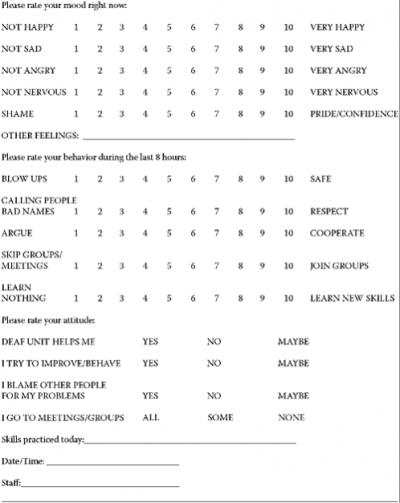
A: It depends on the context of the image. If it’s critical to understanding the book that readers know exactly what was asked in the survey then we might want to translate the entire survey content in a prodnote; otherwise, if it doesn’t really matter to the reading experience what the details of the survey are then alt-text will do. It’s a bit of a judgement call.
Q: I am editing a book that has very long tables that are images. I obviously need to convert them to readable tables in Word, but my question is should I create on very large table, or should I cut it down into smaller tables?
A: In this case you can break the sub-sections down into their own tables with each disorder its own table. You can caption each table with the name of the disorder.
Q: I am working on The Boat People, and in the Discussion Questions section, the ePub navigates to the section of the book it is referring to in the question (i.e. saying "On this page…"). I wasn't sure how to incorporate this navigation in the etext version, so I added this producer's note and added the chapter names beside where the "this page" reference was:
Start Producer’s Note
Page numbers have not been retained in this digital version of The Boat People. In the original digital book, some of the questions refer to “this page”, linking the reader to the page. We have added chapter references in brackets for easier navigation, since page numbers have not been retained in this digital copy.
End Producer’s Note
Example from the text with chapter names added:
6. On this page (Family Business), Grace’s mother, Kumi, describes how her parents “kept quiet” about what the family endured during the internment of Japanese Canadians, because they “thought they were protecting us.” Later, on this page (Don’t Rock the Boat), Grace recalls her grandmother telling her to “Focus on tomorrow.
Was this the correct way to approach this problem? What could I have done differently?
A: Interesting question. I think that's a good approach, although maybe not ideal as, like you say, it doesn't link to the exact location in the book (refers people to the general Chapter as opposed to the specific page).
Q: Another TTS question: will things like "I had a 16' dinghy" and "there were 5.5" medium guns" be said as feet and inches?
A: It would depend on the text-to-speech software being used. VoiceOver (Mac's built-in TTS) recognizes these as measurements and reads them as such, i.e. "five feet five inches" and "16 foot dinghy". If you're using Mac and are curious how text is read, you can enable TTS (same if you're using Windows, which uses Narrator).
Q: I'm almost positive that I know the answer to this one (TTS is smart!) but just wanted to double check: Should ordinal numbers (1st, 2nd, etc.) be written out all in normal text? Or should the abbreviated letters be superscript, as Word prompts them to be when typed out?
A: How things are read aloud depends on the TTS software being used, but yes - generally TTS is smart :) I tested it on my Mac (which uses VoiceOver) and it reads "1st" and 1st with the st as superscript the same way – as "first". I've yet to come across a case where numbers are misread.
Q: The opening sections of Theomatics are all signed off by the author of that section including their a sign off, full name, and either the date or an address. How should I format this?
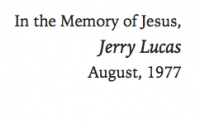


A: This can be formatted as normal paragraph text.
Q: I am editing a play. All the dialogue begins with the characters name, e.g. Character: Dialogue. This part is clear, but I am wondering if there is anything special you want me to do with the stage directions. Maybe an inline producers note indicating it is a stage direction and not dialogue?
A: Good question. The stage directions are normally marked as "asides" or "sidebars". We can follow the guidelines for sidebar content.
Q What should I do with the following section:

A: We can remove this section.
Q: What do we do if we notice an obvious formatting error in the ePub version (and Word version) of the book? In Sex Made Easy, there are numbered subheadings and the author has written #70 twice and has skipped #72. Is this something I should correct?
A: The DTB should reflect the original text, errors and all (unfortunately we're not editing for writing). We can tell the reader about this issue in the Producer's Note section of the book.
Q: How does DAISY read ellipses? I have been editing ellipses with spaces between or more than three points (ex: . . . . ) to three points with a space at the end (ex: … ) but I’m not sure if this matters or if it’s correct; it was more just based on assumption and/or personal preference. Thoughts?
A: How the TTS reads depends on 2 main things: a) the software and b) user's customized settings. As for editing, if it's unclear how to transcribe something based on the original text, we should look up the proper way to do it; for example, we can refer to a style guide, such as Chicago or APA. Here's what Chicago has to say about ellipsis: Style Guide: Punctuation
